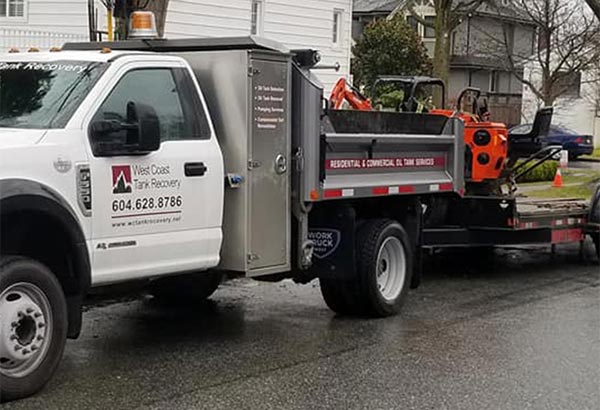 Fully Licensed and Insured
Fully Licensed and Insured Request an Oil Tank Scan
Request an Oil Tank Scan Request a Free Estimate
Request a Free Estimate

Tanks storing oil can be found in any area of your home. Locating these tanks is not easy. But there are few signs that help you locate an old oil tank, buried in the backyard of your home.
How to locate oil tanks?
Depending on the region you are living in, these oil tanks could be found above or below the ground. If you found it above the ground, it is easy to monitor. The home heating oil usually has a tendency to freeze in extreme cold so as a means to keep the oil liquid and flowing was a need. The above ground tanks were easy to deal with when you could actually convert from oil to gas or electric heating. You simply need to empty them out and move them away.
Underground oil tanks can have separate issues. There are numerous unused underground tanks in existence and many of them still contain heating oil. Made of 12-gauge steel, these tanks are 300 to 500 gallons in size. The life of oil tank varies depending on the properties of the encircling soil. They are really difficult to locate.
How to Get Rid of an Oil Tank?
There are two main options for decommissioning. First one is removal which comes as an expensive option. Another is to fill and abandon the tank in place. Removing the tank is necessary for multiple reasons. Most municipalities feel that expense involved. It shows your abidance by law itself. A properly decommissioned tank which has been fully documented to meet the applicable regulations will not be a problem in the loan process. It is necessary for ensuring the safety of the environment. People should understand the hazardous results of the leaking oil tank.
Seek the professional help and hire a reliable oil tank removal company that will help you in the following steps:
Detection: Professionals use quality oil tank and fuel tank detection equipment and techniques and locate both underground and above ground tanks in Vancouver.
Removal: After detecting the oil tank, they undertake the removal task of oil tanks, fuel tanks and storage tanks on both commercial and residential buildings.
Disposal: This is the most important step in the process of oil tank removal. It should be disposed in such a way that causes minimum harm to the environment. Professionals make sure to dispose the oil tank properly.
Backfill: Once the removal of the oil tank is done from the property, it is vital to backfill the land. Availing professional oil tank removal assistance helps you backfill the land in a timely manner.